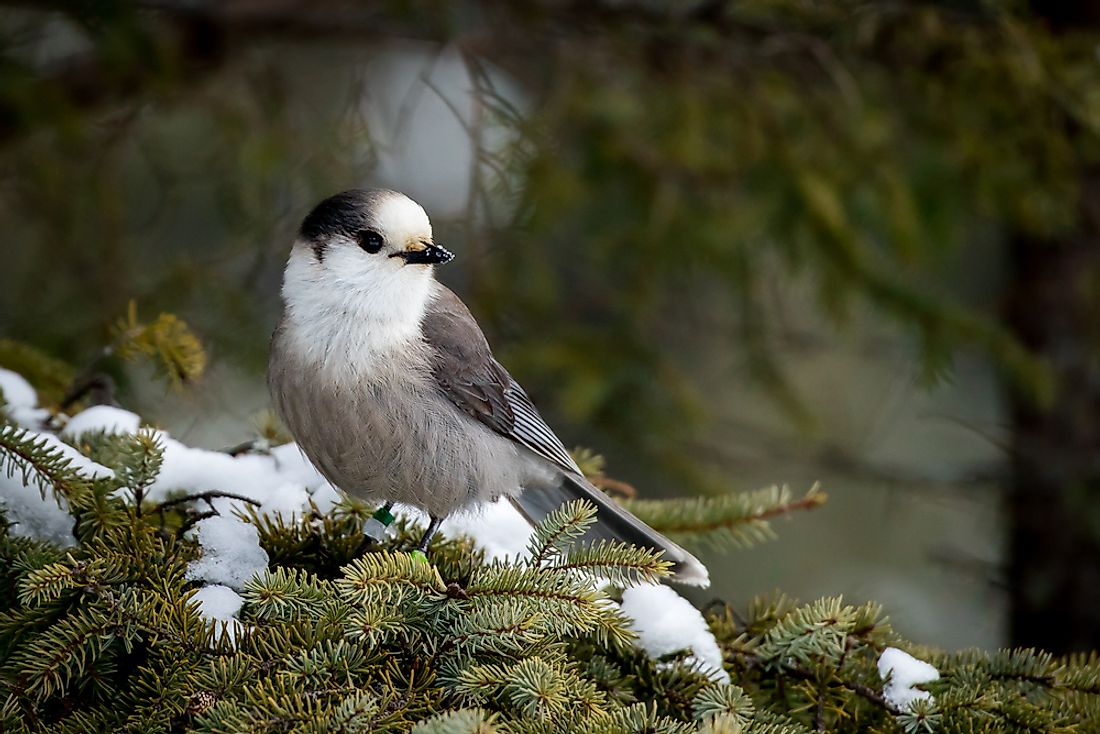What is the National Bird of Canada?

National symbols are important to a country since they represent certain aspects and values which are considered a national significance for a nation. The national symbols may or may not appear on the national flag, coat of arm, or emblem. A country may use animals, trees, or objects as their national symbols. Choosing a national symbol is a process that may involve legislation, competitions, and referendum. In Canada, the opinions thousands of Canadians and experts were considered before a final bird was picked by the National Geographic of Canada. The process that began in 2015 saw the country settling on the gray jay as the national bird.
The Gray Jay is the National Bird of Canada
Gray jay is a passerine bird belonging to the family Corvidae. It is mostly found in the boreal forest of North America. The bird is fairly large and has pale gray underparts and dark grey upperpart. Gray jay is a friendly bird and often approach human for food. It is also popularly known as the camp robber, whisky jack, and venison-hawk. Gray jay is listed as Least Concern by the IUCN. However, the anthropogenic climate change in the southern range may adversely affect its population. In some Fist Nation cultures, the bird is associated with mythological figures including Wisakedjak who was anglicized to Whiskyjack.
Physical Description
The gray jay is a relatively large songbird with an adult measuring 9.8 to 13 inches long. It has a wingspan of about 18 inches and weighs between 65 to 70 grams. The adults are characterized by gray back feathers with a lighter grey underpart. It has a white head with a dark gray nape and hood. The beak is short and black while the eyes are dark. The gray tail has a lighter tip while the legs and feet are black. Gray jay has a thick plumage which aids in the insulation in the cold habitat. Although the species is not sexually dimorphic, the males are slightly larger than the female. The juvenile is often dark gray all over the body and only gains the adult plumage after the first molting which takes place around July or August.
Distribution and Habitat
The range of the gray jay spans from northern Alaska, Newfoundland, Labrador, California, Idaho, New Mexico, and South Dakota. The bird is also found in some of the northern reaches of states including New York, Wisconsin, Michigan, and Minnesota. The majority of the gray jay inhabits places with a strong presence of spruce and pine. They require sufficiently cold temperatures that facilitate the storage of perishable food particles. The bird is generally omnivorous, feeding mainly on arthropods small rodents, and nestling birds. However, several species of birds also prey on them including great gray owls and the northern hawk-owl.
Why Was the Gray Jay Chosen As the National Bird of Canada?
For approximately 200 years, the gray jay was known as “Canadian Jay” to the English speakers. The bird was renamed the “gray jay” in 1957 by the American Ornithologists’ Union. However, scientifically the bird is referred to as Perisoreus Canadensis. The bird is found in almost all the provinces of territories of Canada. the preferred habitat for the species is Canada’s boreal and mountain forests. Gray jay is also one of the smartest birds in the world and has almost the same body-to-brain ratio as human beings.











